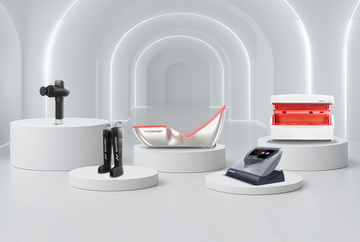The Science of Sound Therapy: Another Dimension of Wellness

Sound therapy, a non-invasive and holistic approach to promoting wellness and treating various health conditions, has gained significant recognition in recent years. With roots in ancient healing practices, sound therapy has evolved into a scientifically-validated method for enhancing physical, mental, and emotional well-being. By harnessing the power of sound vibrations, this transformative modality has the potential to positively influence the human body and mind, promoting relaxation, reducing stress, and facilitating healing processes.
As we explore the science behind sound therapy and its various applications, we aim to provide valuable insights into this fascinating field and shed light on how it can be effectively integrated into a comprehensive wellness routine. In this article, we will delve into the world of sound therapy, examining its scientific underpinnings, techniques, and potential benefits. We will also discuss how sound therapy can work in harmony with other holistic practices, such as meditation, yoga, and innovative technologies like EnergyLounger's light therapy, to create a synergistic approach to overall well-being. By understanding the transformative power of sound and its role in promoting health and wellness, individuals can make informed decisions about incorporating sound therapy into their personal growth and healing journeys.
The Science Behind Sound Therapy

At the core of sound therapy lies the principle that sound vibrations can profoundly influence the human body and mind. When exposed to sound waves, our cells and tissues resonate with the incoming vibrations, triggering a cascade of physiological and neurological responses that can contribute to healing and wellness. This phenomenon is rooted in the fundamental nature of matter, as all physical substances, including the human body, are composed of vibrating particles.
One of the key mechanisms through which sound therapy exerts its effects is the concept of entrainment. Entrainment refers to the synchronization of our brainwaves with external rhythms or frequencies, allowing the brain to align with and respond to specific auditory stimuli. Different brainwave states are associated with distinct mental and emotional states, ranging from deep relaxation and meditation to focused attention and problem-solving. By utilizing targeted sound frequencies and patterns, sound therapy can guide the brain into desired states, promoting relaxation, reducing stress, and enhancing cognitive function.
Research has shown that sound therapy can influence the autonomic nervous system, which plays a crucial role in regulating vital functions such as heart rate, breathing, and digestion. Certain frequencies and tones have been found to activate the parasympathetic nervous system, inducing a relaxation response characterized by decreased heart rate, slower breathing, and reduced muscle tension. This state of deep relaxation is conducive to healing, as it allows the body to allocate resources towards repair, regeneration, and immune function.
Moreover, sound therapy has been found to impact the endocrine system, which is responsible for regulating hormones in the body. Studies have demonstrated that exposure to specific sound frequencies can modulate the release of stress hormones, such as cortisol, and promote the production of feel-good neurotransmitters, like serotonin and dopamine. By reducing stress levels and promoting a sense of well-being, sound therapy can create an internal environment that supports healing and optimal functioning.
In addition to its effects on the physical body, sound therapy has been shown to have a profound impact on emotional and mental well-being. By inducing states of deep relaxation and promoting a sense of inner peace, sound therapy can help alleviate symptoms of anxiety, depression, and stress-related disorders. The therapeutic use of sound can also facilitate emotional release, self-awareness, and personal growth, as individuals explore the depths of their inner landscapes and process unresolved emotions.
As scientific research continues to validate the efficacy of sound therapy, it is becoming increasingly clear that this ancient healing modality has a valuable role to play in modern wellness practices. By understanding the mechanisms through which sound influences the body and mind, healthcare professionals and individuals alike can harness the power of sound to promote healing, resilience, and optimal well-being.
Types of Sound Therapy

Sound therapy encompasses a wide range of techniques and modalities, each with its own unique characteristics and potential benefits. From the use of traditional instruments to modern technological innovations, the world of sound therapy offers a rich tapestry of approaches to suit individual needs and preferences.
One of the most well-established forms of sound therapy is music therapy, which involves the therapeutic use of music to promote healing, self-expression, and emotional regulation. Trained music therapists work with individuals or groups, carefully selecting and employing music to address specific therapeutic goals. These goals may include reducing anxiety, improving mood, enhancing cognitive function, and facilitating social connection. Music therapy has been successfully applied in various settings, from hospitals and clinics to schools and community centers, and has shown promise in supporting individuals across the lifespan, from premature infants to older adults with dementia.
Another widely recognized form of sound therapy is the use of binaural beats, which involve the simultaneous presentation of two slightly different frequencies to each ear. The brain perceives and processes this frequency difference, resulting in the experience of a third "beat" frequency. By carefully selecting specific frequency combinations, binaural beats can be used to entrain brainwaves and guide the brain into desired states. For example, binaural beats in the alpha frequency range (8-13 Hz) have been associated with relaxation, stress reduction, and enhanced creativity, while beats in the theta range (4-8 Hz) have been linked to deep meditation, emotional healing, and intuition. The use of binaural beats has gained popularity as a non-invasive tool for promoting mental and emotional well-being, with applications ranging from personal growth and development to clinical settings.
Sound baths and gong therapy have emerged as immersive and transformative sound experiences, gaining recognition for their ability to promote deep relaxation, emotional release, and spiritual exploration. In these practices, participants typically lie down or sit comfortably while being bathed in the vibrations of various instruments, such as gongs, singing bowls, chimes, and crystal bowls. The rich and complex soundscapes created by these instruments are designed to envelop the listener, facilitating a sense of unity and transcendence. Many individuals report profound experiences of inner peace, clarity, and connection during sound baths and gong therapy sessions, as they allow themselves to surrender to the transformative power of sound.
In addition to these well-known modalities, sound therapy also encompasses a range of other techniques and approaches. Vocal toning, for example, involves the use of elongated vowel sounds to create vibrations in the body, promoting relaxation, emotional balance, and self-expression. Guided imagery and music (GIM) is a depth-oriented, psychotherapeutic approach that combines music listening with verbal dialogue and creative expression to facilitate personal growth and transformation. Vibroacoustic therapy, which involves the use of low-frequency sound vibrations applied directly to the body through specialized mats or chairs, has been explored as a means of reducing pain, improving circulation, and promoting overall relaxation.
As technology continues to advance, new forms of sound therapy are emerging, blending traditional techniques with cutting-edge innovations. From the development of personalized sound healing apps to the integration of virtual reality and biofeedback in sound therapy sessions, the field is constantly evolving to meet the diverse needs and preferences of individuals seeking healing and wellness.
By exploring the rich and varied landscape of sound therapy modalities, individuals can discover the approaches that resonate most deeply with their unique needs and aspirations. Whether through the timeless power of music, the precision of binaural beats, or the immersive nature of sound baths, sound therapy offers a pathway to greater harmony, resilience, and self-discovery.
Sound Therapy for Specific Health Conditions

Sound therapy has shown promise in addressing a wide range of health conditions, offering a non-invasive and complementary approach to traditional medical treatments. From chronic pain management to mental health support and sleep enhancement, the therapeutic application of sound has the potential to alleviate symptoms, improve quality of life, and promote overall well-being.
Chronic pain is a complex and debilitating condition that affects millions of individuals worldwide, often requiring a multifaceted approach to management. Sound therapy, particularly in the form of low-frequency sound stimulation, has emerged as a potential non-pharmacological option for pain relief. While the exact mechanisms underlying sound therapy's analgesic effects are not fully understood, several theories have been proposed. One hypothesis suggests that sound vibrations may stimulate mechanoreceptors in the skin, muscles, and joints, modulating pain perception through the gate control theory of pain. Additionally, sound therapy may influence the release of endogenous opioids, such as endorphins, which are known to play a role in pain modulation. By promoting relaxation and reducing muscle tension, sound therapy may also help to interrupt the cycle of pain and stress, providing a sense of relief and improved function.
In the realm of mental health, sound therapy has garnered attention as a complementary treatment for a range of conditions, including anxiety, depression, and post-traumatic stress disorder (PTSD). While sound therapy is not intended to replace traditional interventions such as psychotherapy and medication, it may offer valuable support and enhancement of treatment outcomes. By promoting relaxation, reducing stress, and facilitating emotional processing, sound therapy can help to create a more balanced and resilient mental state. For example, the use of binaural beats in the alpha frequency range has been associated with decreased anxiety and improved mood, while theta frequencies have been linked to deep emotional healing and the resolution of traumatic experiences. Sound therapy can also serve as a powerful tool for self-regulation, providing individuals with a means of managing stress, cultivating mindfulness, and promoting overall mental well-being.
Sleep disorders, such as insomnia and sleep apnea, can have far-reaching consequences for physical and mental health, impacting daily functioning, cognitive performance, and emotional regulation. Sound therapy has shown potential as a natural and non-invasive approach to improving sleep quality and duration. By promoting relaxation, reducing stress, and creating a conducive environment for sleep, sound therapy can help individuals overcome barriers to restful and restorative sleep. The use of specific sound frequencies, such as delta waves (0.5-4 Hz), which are associated with deep, dreamless sleep, can help to entrain the brain and guide it into a state of profound rest. Additionally, the incorporation of soothing nature sounds, such as gentle rainfall or ocean waves, can create a calming atmosphere that facilitates the transition into sleep. Sound therapy can also be used in conjunction with other sleep-promoting practices, such as relaxation techniques, sleep hygiene strategies, and lifestyle modifications, to optimize sleep outcomes.
Beyond these specific health conditions, sound therapy has been explored as a means of promoting overall well-being and supporting individuals in various stages of life. For example, sound therapy has been used to support women during pregnancy, labor, and postpartum periods, helping to reduce stress, alleviate discomfort, and promote bonding with the baby. In pediatric settings, sound therapy has been employed to soothe and comfort infants, facilitate neurodevelopment, and promote healthy attachment. For older adults, sound therapy can serve as a valuable tool for promoting cognitive function, reducing agitation associated with dementia, and enhancing overall quality of life.
As research continues to illuminate the therapeutic potential of sound, it is becoming increasingly evident that this modality can play a significant role in integrative and holistic healthcare. By working in harmony with conventional medical treatments, sound therapy offers a powerful means of supporting individuals in their journey towards healing, resilience, and optimal well-being. As healthcare providers and individuals alike recognize the value of integrating mind-body approaches into the therapeutic process, sound therapy is poised to become an increasingly important tool in the pursuit of comprehensive and person-centered care.
Integrating Sound Therapy into Holistic Wellness

Sound therapy is a powerful and versatile modality that can be seamlessly integrated into a holistic wellness routine, working synergistically with other practices to promote optimal health and well-being. By combining sound therapy with complementary approaches, such as meditation, yoga, and innovative technologies like EnergyLounger's light therapy, individuals can create a comprehensive and personalized path to healing and self-discovery.
Meditation and sound therapy share a natural affinity, as both practices aim to cultivate inner peace, clarity, and connection. By incorporating sound therapy into a meditation practice, individuals can deepen their experience of relaxation, focus, and self-awareness. The use of specific sound frequencies, such as binaural beats in the alpha or theta range, can help to guide the brain into a meditative state, facilitating the process of letting go of distracting thoughts and emotions. Similarly, the integration of ambient soundscapes, such as the soothing tones of singing bowls or the gentle rustle of leaves, can create an immersive and conducive environment for meditation, promoting a sense of grounding and presence.
Yoga, a time-honored practice that combines physical postures, breathwork, and meditation, can also be greatly enhanced by the integration of sound therapy. The use of carefully selected music or sound frequencies during a yoga practice can help to deepen the experience of relaxation, focus, and mind-body connection. For example, the incorporation of binaural beats in the alpha frequency range can promote a sense of flow and ease during gentle yoga sequences, while the use of more dynamic and energizing soundscapes can support the practice of vigorous styles, such as vinyasa or power yoga. By synchronizing movement, breath, and sound, individuals can create a synergistic and transformative yoga experience that nourishes the body, mind, and spirit.
The integration of sound therapy with cutting-edge technologies, such as EnergyLounger's light therapy, opens up new and exciting possibilities for holistic wellness. EnergyLounger's innovative platform combines the healing power of red and near-infrared light with the potential of sound therapy to create a truly immersive and transformative experience. By synchronizing light therapy sessions with specifically designed sound programs, individuals can optimize the relaxation response, enhance cellular energy production, and promote deep healing on multiple levels. The combination of light and sound therapy can work synergistically to reduce stress, alleviate pain, improve sleep, and boost overall vitality, offering a powerful and non-invasive means of supporting health and well-being.
In addition to these specific integrations, sound therapy can be incorporated into a wide range of holistic wellness practices, such as massage therapy, acupuncture, and energy healing modalities. The use of sound therapy in conjunction with these practices can help to create a more immersive and receptive state, facilitating the release of tension, the flow of vital energy, and the promotion of deep healing. For example, the integration of soothing sound frequencies during a massage session can enhance the experience of relaxation and promote a greater sense of letting go, while the use of specific tones and vibrations during an acupuncture treatment can help to balance and harmonize the body's energy meridians.
To create a personalized sound therapy practice, individuals can begin by exploring the various modalities and techniques available, such as binaural beats, guided meditations, and sound baths, to discover what resonates most deeply with their unique needs and preferences. By setting clear intentions and cultivating a regular practice, individuals can harness the power of sound to support their journey towards greater harmony, resilience, and self-awareness. Whether through the use of personal sound therapy devices, the attendance of live sound healing events, or the integration of sound into daily life, the possibilities for incorporating sound therapy into a holistic wellness routine are virtually endless.
As the field of sound therapy continues to evolve and expand, it is becoming increasingly clear that this ancient and transformative modality has a vital role to play in the modern pursuit of holistic well-being. By embracing the power of sound and integrating it into a comprehensive approach to wellness, individuals can unlock new levels of healing, growth, and self-discovery, paving the way for a more harmonious and fulfilling life.
The Future of Sound Therapy

As the world becomes increasingly aware of the importance of holistic health and wellness, the future of sound therapy is filled with exciting possibilities. With a growing body of scientific research validating its efficacy and a rising interest in non-invasive, mind-body approaches to healing, sound therapy is poised to become an increasingly important tool in the pursuit of optimal well-being.
One of the most promising areas of growth in sound therapy is the integration of cutting-edge technologies and innovative delivery methods. From the development of personalized sound healing apps and wearable devices to the use of virtual reality and biofeedback in sound therapy sessions, the field is constantly evolving to meet the diverse needs and preferences of individuals seeking healing and wellness. These technological advancements have the potential to make sound therapy more accessible, effective, and personalized than ever before.
As research continues to illuminate the mechanisms underlying sound therapy's effects on the brain and body, we can expect to see more targeted and evidence-based applications of this modality. From the use of specific frequencies to address particular health conditions to the development of standardized protocols for sound therapy interventions, the future of sound therapy is rich with opportunities for growth and refinement.
Moreover, the integration of sound therapy with other holistic practices, such as meditation, yoga, and light therapy, is likely to become increasingly common as individuals and healthcare providers recognize the synergistic benefits of a comprehensive approach to wellness. By harnessing the power of sound in conjunction with other modalities, we can create a more robust and transformative framework for healing and self-discovery.
As the field of sound therapy continues to evolve and expand, it is essential for individuals and healthcare professionals alike to stay informed about the latest research, technologies, and best practices. By embracing a spirit of curiosity, openness, and collaboration, we can collectively shape a future in which the transformative power of sound is fully realized and integrated into the fabric of our daily lives and healthcare systems.
Conclusion: The Science of Sound Therapy
Sound therapy is a powerful and scientifically-validated modality that offers a gateway to profound healing, self-discovery, and holistic well-being. By harnessing the transformative potential of sound vibrations, this ancient and ever-evolving practice can help individuals to reduce stress, alleviate pain, improve mental health, enhance sleep, and promote overall vitality.
As we have explored throughout this article, sound therapy is a remarkably versatile and adaptable approach to wellness, capable of being integrated with a wide range of complementary practices, such as meditation, yoga, and innovative technologies like Energy Loungers light therapy.
Embark on your journey to holistic wellness with the transformative power of light therapy—learn more and get started today!
Further Reading
- Sound Therapy International: Offers a comprehensive overview of sound therapy, its benefits, and courses for those interested in becoming practitioners. Visit Sound Therapy International
- The British Academy of Sound Therapy (BAST): Provides detailed information on sound therapy research, courses, and the science behind how sound affects the human body and emotions. Explore BAST
- Music and Medicine: An interdisciplinary journal that publishes research on music therapy, including its clinical aplications and its efficacy in health settings. Read Music and Medicine




